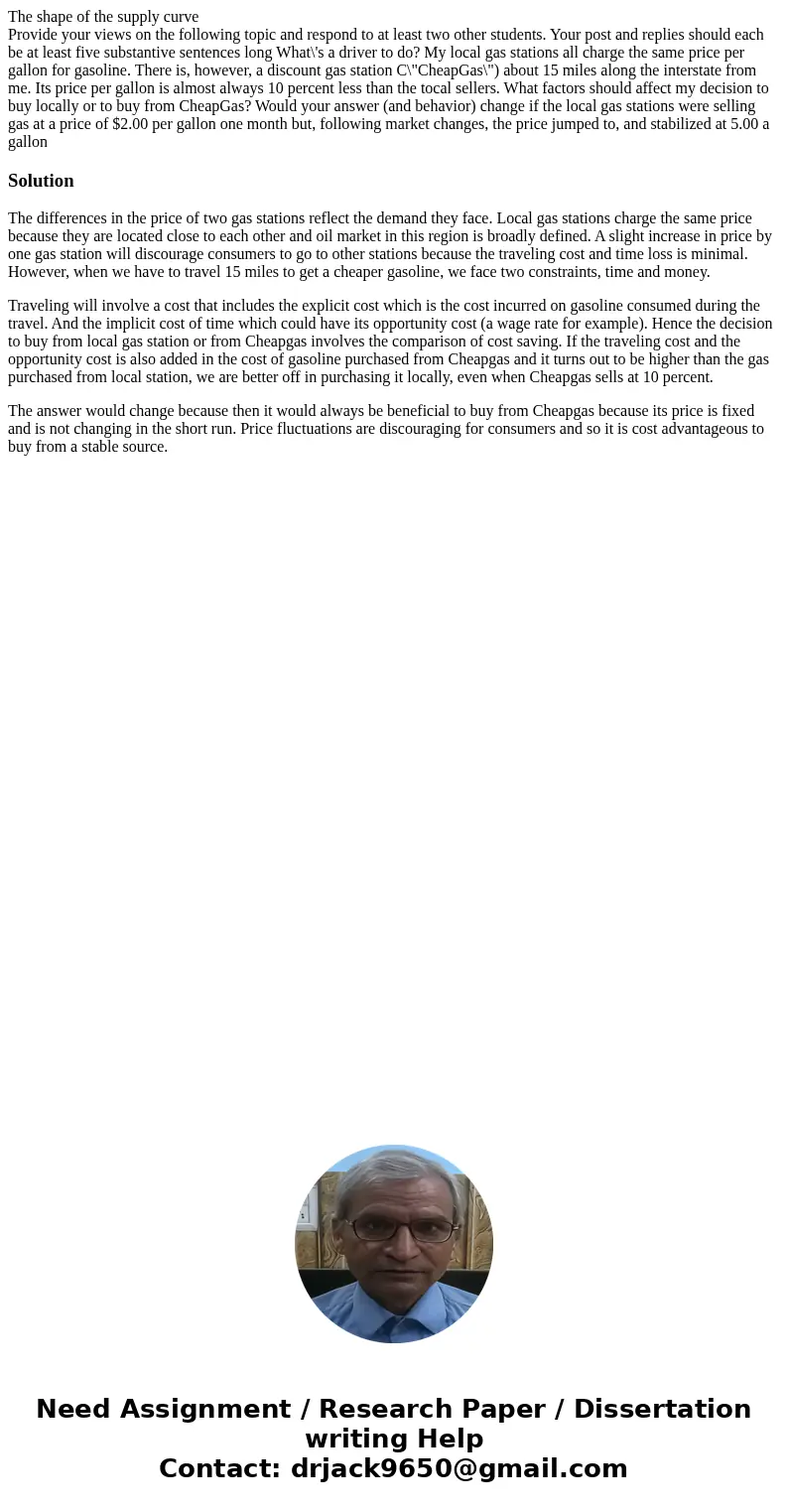The shape of the supply curve Provide your views on the foll
Solution
The differences in the price of two gas stations reflect the demand they face. Local gas stations charge the same price because they are located close to each other and oil market in this region is broadly defined. A slight increase in price by one gas station will discourage consumers to go to other stations because the traveling cost and time loss is minimal. However, when we have to travel 15 miles to get a cheaper gasoline, we face two constraints, time and money.
Traveling will involve a cost that includes the explicit cost which is the cost incurred on gasoline consumed during the travel. And the implicit cost of time which could have its opportunity cost (a wage rate for example). Hence the decision to buy from local gas station or from Cheapgas involves the comparison of cost saving. If the traveling cost and the opportunity cost is also added in the cost of gasoline purchased from Cheapgas and it turns out to be higher than the gas purchased from local station, we are better off in purchasing it locally, even when Cheapgas sells at 10 percent.
The answer would change because then it would always be beneficial to buy from Cheapgas because its price is fixed and is not changing in the short run. Price fluctuations are discouraging for consumers and so it is cost advantageous to buy from a stable source.

 Homework Sourse
Homework Sourse